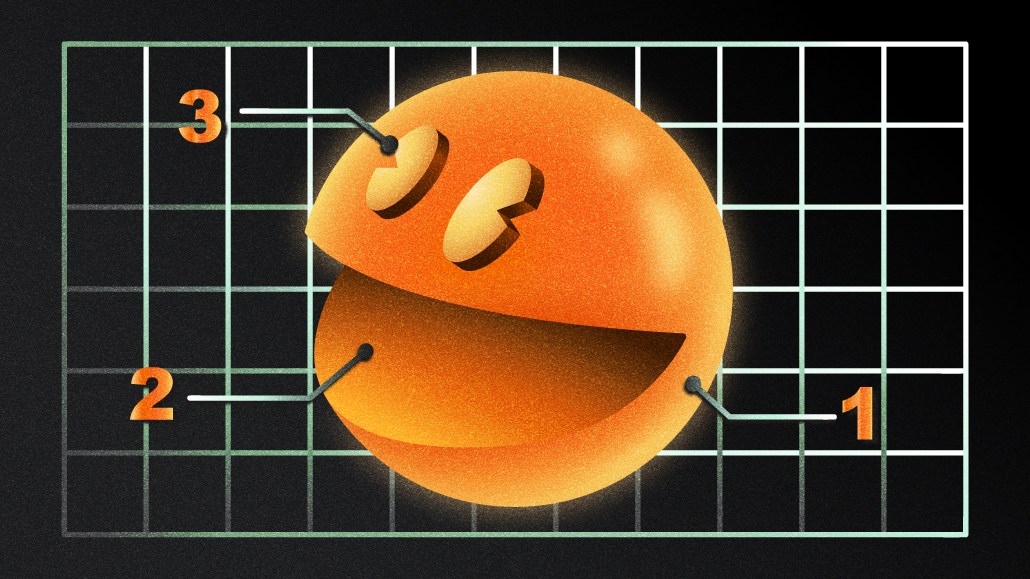Connect with execs from The New York Times, TIME, Dotdash Meredith and many more

A visit to Mother’s Brooklyn, N.Y., headquarters reveals the independent agency’s attention to detail in showcasing originality while fitting the broader idea of what an agency should be. It’s set in a cool warehouse location in the industrial Gowanus neighborhood, complete with vintage wood furniture, massive bar for coffee and beer, lunch from a local vegan eatery — even a baby amphitheater for Monday motivational meetings.
Media by Mother, the agency’s 3-year-old media agency led by Dave Gaines — whose holding company background at various WPP and Publicis units over the last three decades shaped his vision to create something different — has applied a similar approach to its digital media investments for its clients.
Gaines explained that Media by Mother crafts digital campaigns by putting its design team, Mother Design, at the center of the effort, almost as a form of quality assurance before the ads get placed. Led by executive creative director Ryan Adair, the design team makes use of software called Celtra that the agency’s design team has “hacked” to get extremely granular in the makeup, look and feel of its work.
It’s a pushback on the fact that programmatic investment in digital almost never involves any examination of the actual creative work.
“One of the big issues we’ve got with digital creativity is, algorithms have put an emphasis on efficiency of distribution, as opposed to the quality and the impact of the creative idea,” said Gaines. “You can see that in the distribution of digital creativity. Dynamic creative optimization tools are generally just plugins to something like The Trade Desk or DV 360, and they’re very, very good at just spitting out 1000s of variations of an ad.”
They’re not good, he added, at crafting a level of execution that doesn’t feel cookie-cutter. That’s where Celtra and the design team comes in, creating what Gaines called “guardrails” for the work.
“Ryan sat with our team and the client team, came up with a whole new design template for every single iteration that we might think about in a digital environment,” said Gaines. “He put some discipline around colors, and the use of photography, even to the point of when we’ve got a human being in the ad, the font is behind them. Just simple things. So now our team will still build thousands of different ads but before they can go out in the world, they have to sit with Ryan.”
For client Premier Bankcard, Gaines, Adair and their teams drilled all the way down to color schemes, fonts and photography to get to results that they said stood out enough to help the client raise its brand perception and awareness levels (although neither Gaines nor Adair could mention specifics due to client sensitivities).
“The application of a clear visual design strategy plus automated production not only makes our digital creative more effective, but it’s logistically easier too,” explained Stephen Corsi, Premier Bankcard’s vp of customer acquisition marketing, who also declined to share results. “Creating recall and stand out online is a hard task creatively. But thinking design-first instead of looking at each ad independently, has made it easier to create consistency in how we turn up across all platforms.”
“These assets are often forgotten, they’re often kind of handled at the last minute or scrapped together,” said Adair. “So there seems to always be a disconnect between sort of hero brand statements or campaigns, and then what you might experience online. The way we work together is just bringing some of those fundamental principles of brand design into an ecosystem like Celtra, and build it once correctly, with the Media by Mother team, so that it just sort of runs itself.”
The internet “is such an ugly environment. It doesn’t need creativity — it needs gorgeous design, and discipline around it,” added Gaines. The next step is to apply the learnings to video — currently all the work is on static digital imagery, said Gaines.
More in Media Buying

Media Buying Briefing: Are holdcos at a tipping point, or is this just another bump in the road?
WPP picks its new CEO but has a struggling business to shore up, while Omnicom and IPG deal with losing key executives in the leadup to their union.

Omnicom confirms the pending exit of influential Annalect chief Slavi Samardzija
The CEO and architect of Omni departs, hinting at pending changes as Omnicon continues $13.5 billion IPG takeover bid.

WPP has its next CEO – but what do clients make of the heir apparent?
The ad industry’s hot take industrial complex went into overdrive upon yesterday’s WPP coronation. Clients are keeping their counsel, however.








